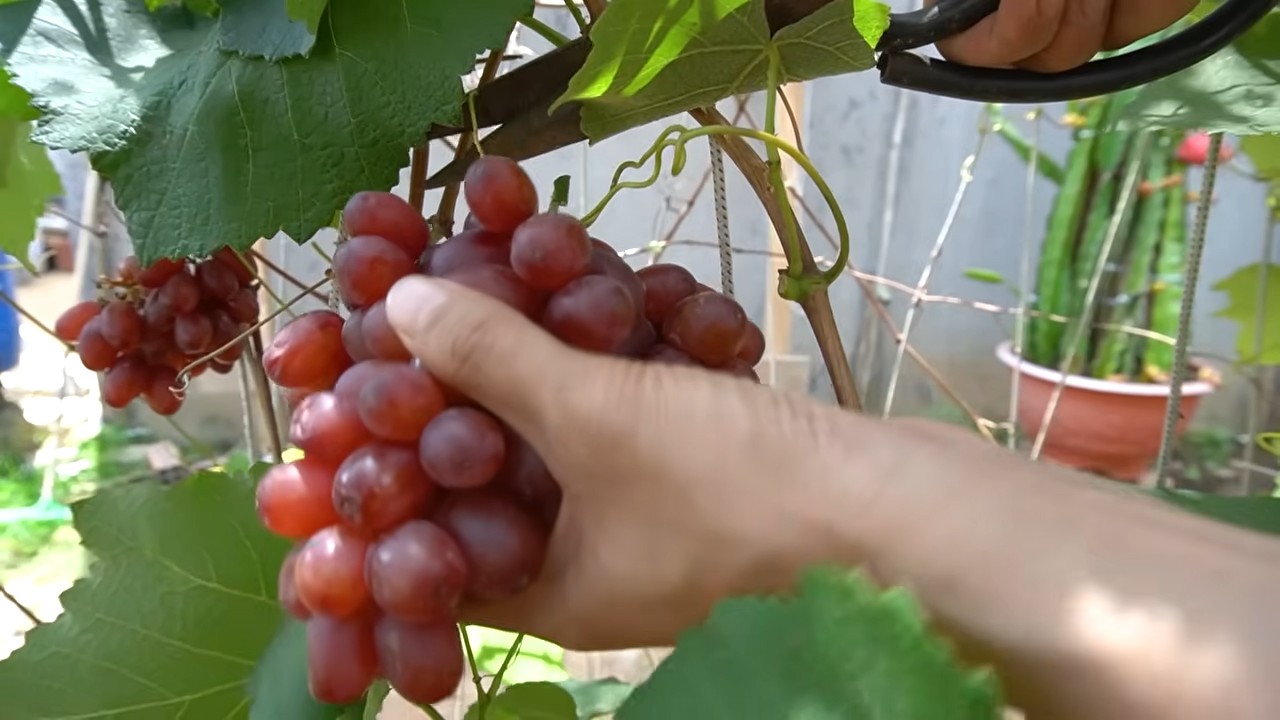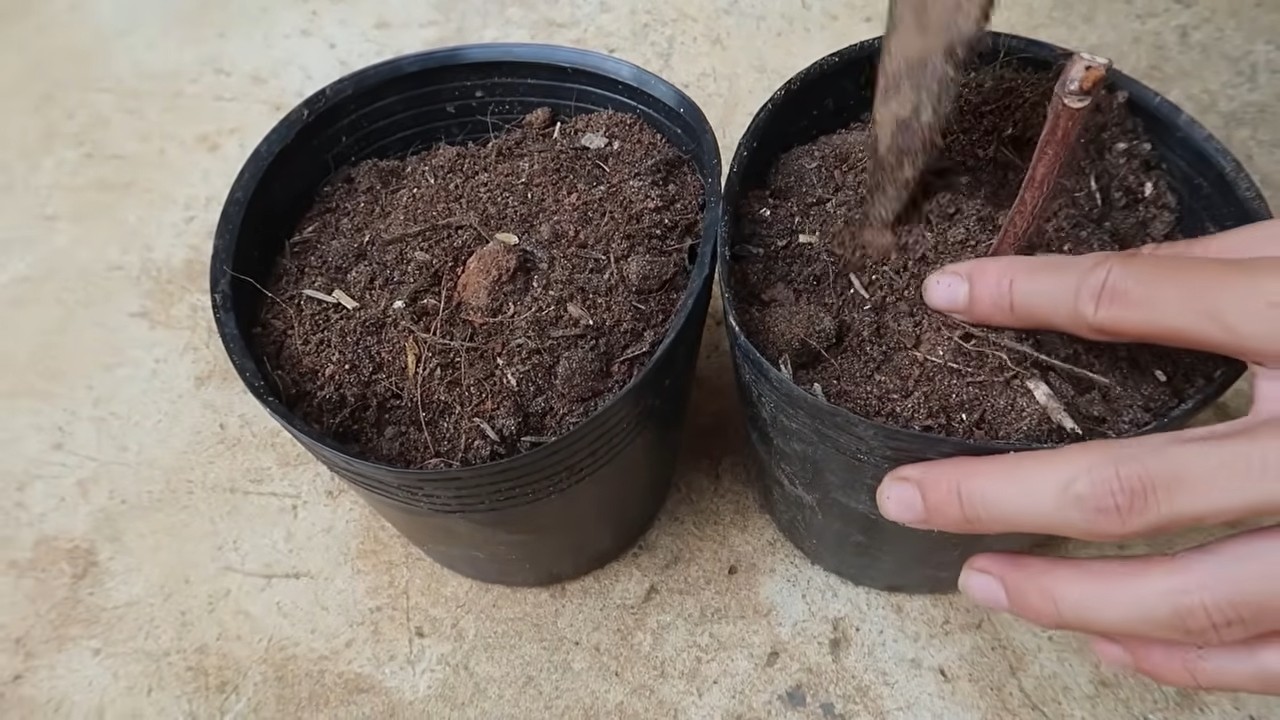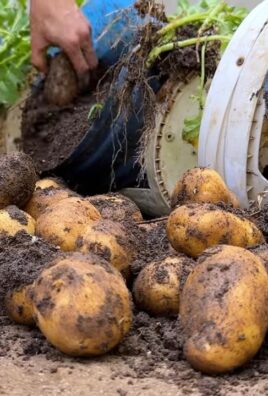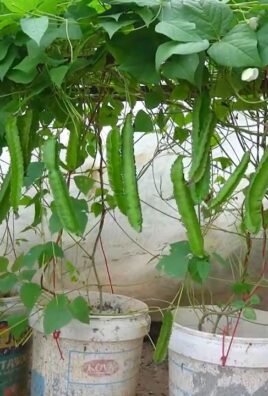Grow grapes indoors? Absolutely! Imagine plucking juicy, sun-kissed grapes right from your own indoor vine, even when the weather outside is frightful. It sounds like something out of a fairytale, doesn’t it? But trust me, with a little know-how and a dash of DIY spirit, you can transform your home into a miniature vineyard.
For centuries, grapes have been revered, not just for their delicious fruit, but also for their symbolic significance. From ancient Roman feasts to modern-day celebrations, grapes represent abundance, prosperity, and good fortune. While traditionally grown outdoors, the desire to cultivate these delectable fruits year-round has led to innovative indoor gardening techniques.
Why should you embark on this indoor grape-growing adventure? Well, for starters, it’s incredibly rewarding! There’s nothing quite like nurturing a plant from a tiny cutting to a fruit-bearing vine. Plus, growing your own grapes allows you to control the growing environment, ensuring you get the freshest, most flavorful fruit possible, free from harmful pesticides. And let’s be honest, who wouldn’t want to impress their friends and family with their green thumb and a bountiful harvest of homegrown grapes? This DIY guide will provide you with all the essential tricks and hacks you need to successfully grow grapes indoors, regardless of your experience level. So, grab your gardening gloves, and let’s get started!

Growing Grapes Indoors: A Comprehensive DIY Guide
Okay, so you want to grow grapes indoors? Awesome! It’s totally doable, and while it requires a bit more attention than, say, a houseplant, the reward of fresh, homegrown grapes is absolutely worth it. I’m going to walk you through everything you need to know, from choosing the right variety to harvesting your delicious bounty. Let’s get started!
Choosing the Right Grape Variety
Not all grape varieties are created equal, especially when it comes to indoor growing. You’ll want to select a variety that’s well-suited to container gardening and doesn’t require a ton of space. Here’s what to look for:
* Compact Growth Habit: Look for varieties described as “dwarf,” “compact,” or “bush.” These tend to be less vigorous and easier to manage in a pot.
* Disease Resistance: Indoor grapes are more susceptible to fungal diseases due to less air circulation. Choose varieties known for their resistance to common grape ailments like powdery mildew and black rot.
* Early Ripening: Opt for varieties that ripen relatively early in the season. This gives you a better chance of harvesting grapes before winter sets in.
* Self-Pollinating: This is crucial! Since you won’t have bees or wind to help with pollination indoors, you need a self-pollinating variety.
Some good options for indoor grape growing include:
* ‘Himrod’ (Seedless, white)
* ‘Vanessa’ (Seedless, red)
* ‘Reliance’ (Seedless, pink)
* ‘Jupiter’ (Seedless, blue-black)
* ‘Thompson Seedless’ (Classic green grape, but can be more challenging indoors)
Essential Supplies and Equipment
Before you dive in, gather all the necessary supplies. Trust me, having everything on hand will make the process much smoother.
* Large Container: Choose a pot that’s at least 15-20 gallons in size. This gives the grape vine’s roots plenty of room to grow. Make sure it has drainage holes!
* High-Quality Potting Mix: Don’t use garden soil! It’s too heavy and doesn’t drain well. Opt for a well-draining potting mix specifically formulated for containers. A mix containing peat moss, perlite, and vermiculite is ideal.
* Trellis or Support System: Grape vines need something to climb on. A small trellis, bamboo stakes, or even a sturdy tomato cage will work.
* Grow Lights (Optional but Recommended): If you don’t have a sunny south-facing window, grow lights are essential for providing adequate light. Full-spectrum LED grow lights are energy-efficient and effective.
* Pruning Shears: Sharp pruning shears are a must for maintaining your grape vine.
* Fertilizer: Use a balanced fertilizer specifically formulated for fruit-bearing plants.
* Watering Can or Hose: For watering your grape vine.
* Spray Bottle: For misting the leaves to increase humidity.
* pH Meter (Optional): To monitor the pH of your soil. Grapes prefer a slightly acidic soil (pH 6.0-7.0).
Planting Your Grape Vine
Now for the fun part! Let’s get your grape vine planted.
1. Prepare the Container: Fill the container with your chosen potting mix, leaving a few inches of space at the top.
2. Plant the Grape Vine: Gently remove the grape vine from its nursery pot. Loosen the roots slightly, especially if they’re circling the bottom of the pot. Place the grape vine in the center of the container, making sure the top of the root ball is level with the soil surface.
3. Backfill with Soil: Fill in the remaining space around the root ball with potting mix, gently firming the soil as you go.
4. Water Thoroughly: Water the grape vine deeply until water drains out of the drainage holes. This helps settle the soil and ensures the roots are well-hydrated.
5. Install the Trellis: Position the trellis or support system in the container, making sure it’s sturdy and can support the weight of the growing vine.
6. Train the Vine: Gently tie the main stem of the grape vine to the trellis using soft plant ties or twine. This will encourage it to grow upwards.
Caring for Your Indoor Grape Vine
Consistent care is key to successfully growing grapes indoors. Here’s what you need to do:
1. Light: Grape vines need at least 6-8 hours of direct sunlight per day. If you don’t have a sunny window, supplement with grow lights. Position the grow lights about 12-18 inches above the plant.
2. Watering: Water your grape vine regularly, especially during the growing season. The soil should be kept consistently moist but not waterlogged. Check the soil moisture by sticking your finger into the soil. If the top inch feels dry, it’s time to water. Reduce watering during the dormant season (winter).
3. Humidity: Grapes prefer moderate humidity. Increase humidity by misting the leaves regularly with a spray bottle or placing a humidifier near the plant.
4. Fertilizing: Fertilize your grape vine every 2-3 weeks during the growing season with a balanced fertilizer. Follow the instructions on the fertilizer label. Reduce or stop fertilizing during the dormant season.
5. Pruning: Pruning is essential for maintaining the shape and productivity of your grape vine. Prune in late winter or early spring, before new growth begins. Remove any dead, damaged, or crossing branches. Also, prune back the previous year’s growth to encourage fruit production. I usually aim to leave about 2-3 buds on each spur.
6. Pollination (If Necessary): While most of the recommended varieties are self-pollinating, you can still improve pollination by gently shaking the vine or using a small paintbrush to transfer pollen from one flower to another. Do this during the flowering period.
7. Pest and Disease Control: Keep an eye out for pests like aphids, spider mites, and mealybugs. Treat infestations promptly with insecticidal soap or neem oil. Prevent fungal diseases by ensuring good air circulation and avoiding overwatering. If you notice any signs of disease, treat with a fungicide.
8. Dormancy: Grape vines need a period of dormancy to produce fruit. In late fall, reduce watering and stop fertilizing. Move the plant to a cooler location (around 40-50°F) for 6-8 weeks. This will help the vine rest and prepare for the next growing season. If you can’t move it to a cooler location, simply reduce watering and let the leaves fall off naturally.
Training and Pruning Techniques
Let’s dive deeper into training and pruning, as these are crucial for maximizing your grape yield.
Training Your Grape Vine
Training refers to guiding the growth of your grape vine to create a desired shape and structure. This helps with air circulation, sunlight penetration, and fruit production.
* Initial Training: When your grape vine is young, focus on establishing a strong main trunk. Tie the main stem to the trellis and encourage it to grow upwards. Remove any side shoots that develop along the lower portion of the trunk.
* Cordon Training: This is a common training method for grape vines. It involves training the main trunk to grow vertically and then developing horizontal “cordons” or arms along the trellis. These cordons will produce the fruiting spurs.
* Spur Pruning: Once you have established the cordons, you’ll need to prune them to create fruiting spurs. Spurs are short, stubby branches that produce the fruit. Prune back the previous year’s growth on the cordons to leave only 2-3 buds on each spur.
Pruning Your Grape Vine
Pruning is the removal of unwanted or unproductive growth. It’s essential for maintaining the health and productivity of your grape vine.
* Timing: The best time to prune grape vines is in late winter or early spring, before new growth begins. This allows the vine to heal properly and prevents excessive sap loss.
* Tools: Use sharp pruning shears to make clean cuts. Dull shears can damage the vine and increase the risk of disease.
* Removing Dead or Damaged Wood: Always start by removing any dead, damaged, or diseased branches. This will improve air circulation and prevent the spread of disease.
* Thinning Out the Canopy: Thin out the canopy by removing some of the excess growth. This will allow more sunlight to reach the fruit and improve air circulation.
* Spur Pruning (Again!): As mentioned earlier, prune back the previous year’s growth on the cordons to leave only 2-3 buds on each spur. These buds will produce the fruit.
* Renewal Pruning: Over time, the cordons can become overcrowded and less productive. To rejuvenate the

Conclusion
So, there you have it! Growing grapes indoors might seem like a daunting task reserved for seasoned horticulturalists, but with the right approach and a little patience, you can absolutely cultivate your own miniature vineyard right in your home. This DIY trick isn’t just about having fresh grapes at your fingertips; it’s about the satisfaction of nurturing a plant from a tiny cutting to a fruit-bearing vine, connecting with nature in a unique and rewarding way, and adding a touch of rustic charm to your living space.
Why is this a must-try? Because it’s more than just a recipe for growing grapes; it’s a recipe for creating an experience. Imagine plucking sun-warmed grapes straight from the vine, knowing you nurtured them from the very beginning. Imagine the conversations sparked by your indoor vineyard, the envy of your friends, and the sheer joy of sharing your homegrown bounty. Plus, think of the money you’ll save on store-bought grapes!
But the benefits extend beyond the tangible. Growing grapes indoors is a fantastic way to reduce stress, improve air quality, and add a vibrant splash of green to your home. It’s a project that engages your mind and body, fostering a sense of accomplishment and connection to the natural world.
Don’t be afraid to experiment! Try different grape varieties to see which thrive best in your indoor environment. Consider using a trellis to create a stunning vertical display. You could even try training your vines to grow along a sunny windowsill or around a doorway, creating a living, breathing work of art.
For those looking for variations, consider these options:
* **Hydroponic Grapes:** Explore growing your grapes hydroponically for faster growth and increased yields. This method involves growing plants without soil, using nutrient-rich water solutions.
* **Container Gardening with a Twist:** Instead of traditional pots, try using repurposed containers like old wine barrels or galvanized tubs for a rustic, vineyard-inspired aesthetic.
* **Grafting for Enhanced Flavor:** If you’re feeling adventurous, learn about grafting techniques to combine the hardiness of one rootstock with the desirable flavor of another grape variety.
Ultimately, the success of your indoor grape-growing venture hinges on your willingness to learn, adapt, and experiment. Don’t be discouraged by setbacks; every challenge is an opportunity to learn and grow, both literally and figuratively.
We wholeheartedly encourage you to give this DIY trick a try. It’s a rewarding and enriching experience that will transform your home and your connection to nature. And most importantly, we want to hear about your journey! Share your experiences, successes, and challenges in the comments below. Post pictures of your indoor vineyards on social media using #IndoorGrapes and inspire others to embark on this exciting adventure. Let’s create a community of indoor grape growers and share the joy of homegrown goodness! Remember, the key to successful **growing grapes indoors** is patience, persistence, and a passion for nurturing life. Happy growing!
Frequently Asked Questions (FAQ)
1. What are the best grape varieties to grow indoors?
The best grape varieties for indoor growing are typically those that are more compact and self-pollinating. Some popular choices include:
* **’Himrod’ Seedless:** A white seedless grape known for its early ripening and sweet flavor. It’s relatively disease-resistant and adapts well to container growing.
* **’Reliance’ Seedless:** A red seedless grape that is extremely cold-hardy, making it a good option for homes with fluctuating temperatures. It has a sweet, slightly tart flavor.
* **’Vanessa’ Seedless:** Another red seedless variety that is known for its excellent flavor and good disease resistance. It ripens relatively early in the season.
* **’Thompson Seedless’:** While more commonly grown commercially, ‘Thompson Seedless’ can be grown indoors with proper care and attention. It requires ample sunlight and consistent watering.
* **’Muscat of Alexandria’:** If you’re looking for a more aromatic grape, ‘Muscat of Alexandria’ is a good choice. However, it may require more attention to pollination.
When selecting a variety, consider your local climate, the amount of sunlight available in your home, and your personal taste preferences.
2. How much sunlight do indoor grapes need?
Grapes need a significant amount of sunlight to thrive and produce fruit. Ideally, they should receive at least 6-8 hours of direct sunlight per day. If you don’t have a south-facing window that provides sufficient sunlight, you may need to supplement with grow lights. Full-spectrum LED grow lights are a good option, as they provide the necessary wavelengths of light for photosynthesis. Position the grow lights about 12-18 inches above the plants and keep them on for 12-16 hours per day.
3. What type of soil is best for growing grapes in containers?
Grapes prefer well-draining soil that is rich in organic matter. A good potting mix for grapes should consist of:
* 1/3 compost or well-rotted manure
* 1/3 peat moss or coconut coir
* 1/3 perlite or vermiculite
This mixture provides good drainage, aeration, and nutrient retention. Avoid using garden soil, as it can become compacted and waterlogged in containers.
4. How often should I water my indoor grapevines?
Water your grapevines regularly, especially during the growing season. The soil should be kept consistently moist but not waterlogged. Check the soil moisture level by sticking your finger about an inch into the soil. If it feels dry, it’s time to water. Water deeply, until water drains out of the bottom of the container. Reduce watering during the dormant season (winter).
5. How do I prune my indoor grapevines?
Pruning is essential for maintaining the shape and productivity of your grapevines. Prune your vines during the dormant season (late winter or early spring) before new growth begins. Remove any dead, damaged, or diseased wood. Also, prune back the previous year’s growth to encourage new fruit-bearing shoots. The specific pruning technique will depend on the variety of grape and the training system you are using. Research the best pruning methods for your chosen variety.
6. How do I pollinate my indoor grapevines?
While some grape varieties are self-pollinating, others may require assistance with pollination, especially when grown indoors. You can hand-pollinate your grapevines by using a small paintbrush to transfer pollen from the male flowers to the female flowers. Gently brush the pollen from the anthers (male parts) of the flowers onto the stigmas (female parts) of the flowers. You can also use a small fan to circulate air around the plants, which can help to distribute pollen.
7. What are some common pests and diseases that affect indoor grapevines?
Common pests that can affect indoor grapevines include spider mites, aphids, and mealybugs. Regularly inspect your plants for signs of infestation and treat them promptly with insecticidal soap or neem oil. Common diseases that can affect grapevines include powdery mildew and downy mildew. Ensure good air circulation around your plants and avoid overwatering to prevent these diseases. If you notice signs of disease, treat your plants with a fungicide.
8. How long does it take for indoor grapevines to produce fruit?
It typically takes 2-3 years for grapevines to start producing fruit. Be patient and provide your plants with the proper care and attention. Once your vines start producing fruit, you can expect to harvest your grapes in late summer or early fall.
9. Can I grow grapes indoors from seed?
While it is possible to grow grapes from seed, it is not recommended. Grape seeds are often difficult to germinate, and the resulting plants may not be true to type, meaning they may not produce the same quality or type of grapes as the parent plant. It is best to start with a cutting or a grafted plant from a reputable nursery.
10. What size container should I use for growing grapes indoors?
Start with a container that is at least 15-20 gallons in size. As your grapevine grows, you may need to transplant it into a larger container. Choose a container that is made of a durable material, such as plastic or terracotta, and that has good drainage holes.




Leave a Comment